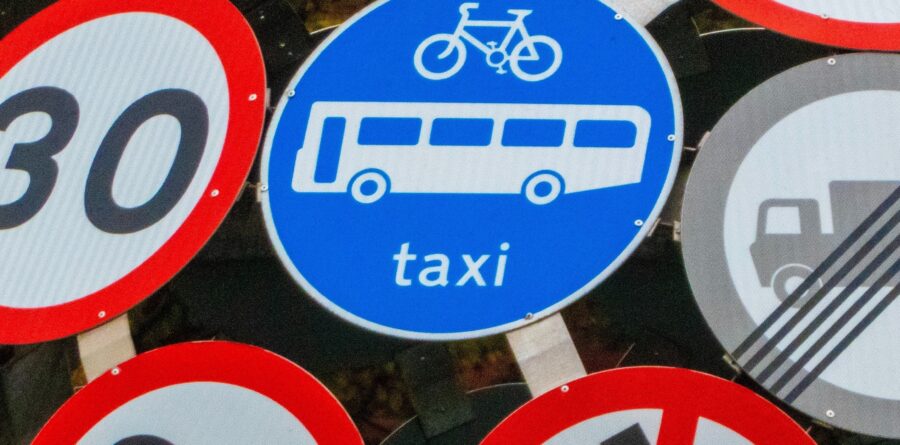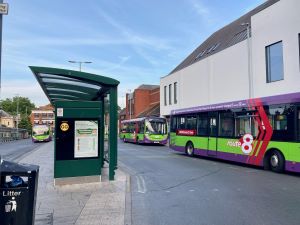The New Highway Code Rules in a Nutshell
21/01/2022 - Mooneerams

It seems like an age since the Department for Transport first indicated that it was considering introducing a host of new rules to the Highway Code. Mooneerams blog of the 29th June 2021 detailed the proposed reforms to the code that it expected would come into force in the Autumn of that year.
The government has finally announced that the updated Highway Code will arrive on 29th January 2022.
Here’s a quick run-through of the main changes:
1. Hierarchy of road users.
There will be a hierarchy, or pecking order, of road users. At the top of this pecking order will come, pedestrians, as they are the least likely to cause danger to other road users. They will be followed by disabled cyclists, cyclists, horse riders, motorcyclists down through other motor vehicles and finally, at the bottom of the pyramid, to the vehicles with the potential to cause the most damage to other road users, namely HGVs.
The concept behind this new Rule H1 of the Highway code is this: those vehicle drivers who could do the most significant harm to more vulnerable road users should have the greatest responsibility to reduce the danger they pose to others.
The rule-makers have been quick to point out that all road users are responsible for their own and other road users safety.
As some have said, this begs the question: why call it a hierarchy of road users, which suggests there is a pecking order?
- 2. Priority for Pedestrians
Road users will be required to give priority to pedestrians at a junction who are: crossing or waiting :
- a) waiting to cross, or
- b) already crossing, a road
- c) into which
- d) or from which they are turning.
The existing law says:
- pedestrians only have the right of way whilst they are already on a zebra crossing, and similarly
- cyclists and pedestrians only have priority whilst already on a parallel (combined zebra and cycle) crossing.
The new rules will mean right of way will be extended to cases where pedestrians (and cyclists in the case of parallel crossings) are waiting to cross.
Most drivers already slow down to allow pedestrians and cyclists to cross at zebra/parallel crossings as it is, so there is little new here.
3. Cyclists to be given priority over other drivers at junctions
Rule H3 deserves to be outlined in full, as follows:
Rule for drivers and motorcyclists
“You should not cut across cyclists, horse riders or horse drawn vehicles going ahead when you are turning into or out of a junction or changing direction or lane, just as you would not turn across the path of another motor vehicle.
This applies whether they are using a cycle lane, a cycle track, or riding ahead on the road and you should give way to them.
Do not turn at a junction if to do so would cause the cyclist, horse rider or horse drawn vehicle going straight ahead to stop or swerve.
You should stop and wait for a safe gap in the flow of cyclists if necessary.
This includes when cyclists are:
- approaching, passing, or moving off from a junction
- moving past or waiting alongside stationary or slow-moving traffic
- travelling around a roundabout.”
Of all the changes to the Highway Code, this section is likely to be the most controversial.
Tom Cotton, head of policy and infrastructure at the RHA (Road Haulage Association), is quoted as saying:
“The proposal to give cyclists a special rule that gives them right of way to pass a turning vehicle is dangerous. It simply defies logic to promote a manoeuvre that puts a cyclist in the (most) dangerous and vulnerable position on the road.”
On the other hand, Duncan Dollimore, Head of Campaigns at Cycling UK, has said:
“This simple change clarifies the rules at junctions and is a major step towards embedding a custom that could make a huge difference to cyclist and pedestrian safety. It would also give highway designers the confidence to design better cycling and walking infrastructure such as cycle lanes and cycle paths that go across the mouths of side-roads, making them simpler, safer, and more efficient for everyone.”
- There are many more rules, updates, or amendments to be incorporated into the new Highway Code. All of them can be found in a government-produced document called Alterations to the Highway Code.
One of the more striking sections of this document is contained in Rule 163, which tells motorists they should:
- leave at least 5 metres when overtaking cyclists at speeds of up to 30mph, and give them more space when overtaking at higher speeds
- pass horse riders and horse-drawn vehicles at speeds under 10 mph and allow at least 2 metres of space
- allow at least 2 metres space and keep to a low speed when passing a pedestrian who is walking in the road (e.g., where there is no pavement)
- take extra care and give more space when overtaking motorcyclists, cyclists, horse riders, horse drawn vehicles and pedestrians in bad weather (including high winds) and at night
- you should wait behind the motorcyclist, cyclist, horse rider, horse drawn vehicle or pedestrian and not overtake if it is unsafe or not possible to meet these clearances
The new Highway Code will not please everyone. How you view the various reforms or updates it will incorporate depends on what category of road user you most frequently consider yourself to come in.
However, most people will agree that if new rules affecting all types of road users are to be introduced, it’s essential that people get to know about them pretty quickly).
The simple fact is that scarcely anyone reads or refers back to the Highway Code. In all probability, the first time many people will be aware of the new amendments to the Highway Code is when the police pull them up for falling foul of a new mandatory rule, or after they’ve been involved in a road accident and find themselves facing a personal injury claim.
The Department of Transport needs to embark on a nationwide public awareness campaign around the new Highway Code, and it needs to do it now. Otherwise, the time and money spent over many years on bringing these changes to fruition, will have been wasted.
All articles on this news site are submitted by registered contributors of SuffolkWire. Find out how to subscribe and submit your stories here »

